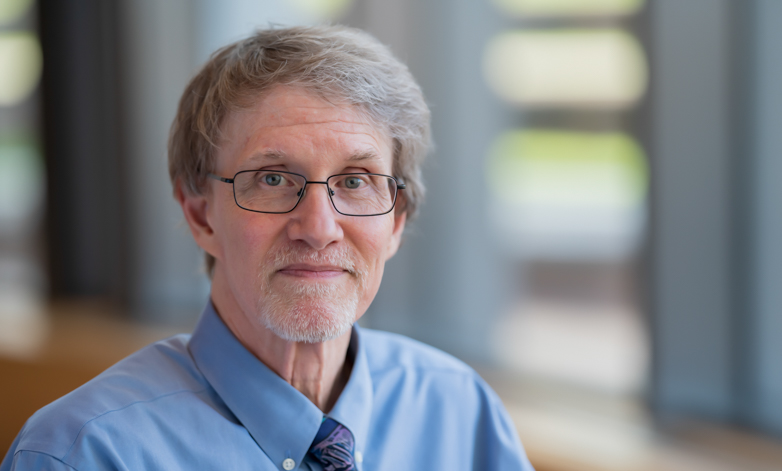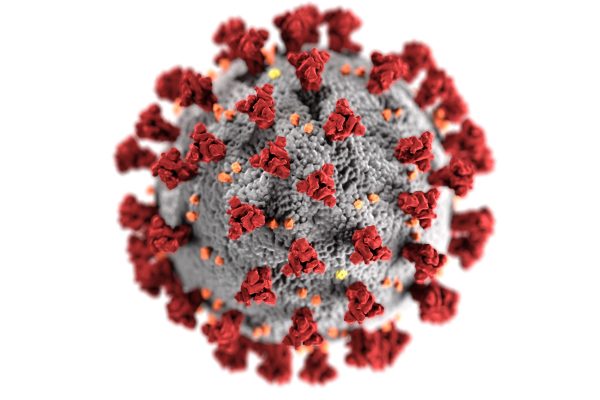The COVID-19 pandemic revealed the crucial role of public health, while simultaneously exposing deep political divides and systemic flaws. Confidence in the Centers for Disease Control and Prevention plummeted by about 20 points per a State Policy Network opinion poll, showing how quickly public trust can be lost and how hard it is to regain.

Despite these issues, there is optimism among public health professionals — in both red and blue states — according to research conducted by Ross C. Brownson, the Steven H. and Susan U. Lipstein Distinguished Professor at the Brown School and founder of the Prevention Research Center at Washington University in St. Louis, and Jonathan Samet, a professor and former dean of the Colorado School of Public Health.
The authors, who spoke with public health leaders nationally, distilled the feedback in their essay, “Reimagining Public Health,” which is the lead article in a June special issue of Health Affairs, one of the nation’s foremost health policy journals.
“We were surprised to find such optimism, even from those in the trenches,” Brownson said. “The pandemic has sparked a call for focused change and an opportunity to address the flaws within the system. By learning from the past and committing to transparency and effective communication, we can restore faith in public health and ensure better preparedness for future crises.”
In the essay, Brownson and Samet make a number of recommendations to restore this faith, including finding common ground, tapping trusted local messengers, countering misinformation, communicating the powerful message of prevention efforts and revamping training for the current and future public health workforce.
Finding common ground
Rebuilding faith in public health begins with finding common ground, i.e., issues that most people support, Brownson said. One good example is the opioid epidemic. “If you look at most public health issues, there’s often a clear red-blue divide along political lines,” he said. “If you look at something like opioid addiction, though, there’s basically no red-blue divide.”
Data suggests that people across political affiliations overwhelmingly support action against opioid addiction. Focusing initially on issues where people agree, rather than divisive ones, can lead to collaborative solutions. This approach promotes constructive dialogue, bridges political divides and spurs action on topics where there is less agreement, Brownson said.
Identifying trusted messengers
Trust in local leaders and government significantly outweighs trust in national institutions. “If you look at how many people trust Congress, it’s down around 30%,” he said. “If you ask someone how much they trust their local leaders, it’s about 70%.”
Given this, Brownson said, it makes sense to identify and recruit respected local figures, akin to community opinion leaders, who can authentically advocate for public health. These influencers may not have formal public health training but can inspire action through community connections and personal stories, such as having a family member affected by diabetes.
By empowering local voices, public health efforts can foster trust, enhancing outcomes. “Imagine a Taylor Swift-like effect,” Brownson said, laughing, “… well-known people with a large following talking about the value of public health. That would be amazing.”
These messengers would be part of a multipronged approach that also would include understanding local audience segmentation and engaging community members in public health decision-making.
Imagine a Taylor Swift-like effect … well-known people with a large following talking about the value of public health. That would be amazing.
Ross C. Brownson
Non-polarizing language is crucial for effectively communicating public health issues in diverse political environments, Brownson said. For instance, in red states, discussing “weather events” instead of “climate change” may make people more receptive to the message. “In Florida, talking about sea level rise in terms of its potential to harm property values and cause economic issues may engage people more effectively than focusing on the health impacts of climate change. The wrong word can be a conversation stopper,” Brownson said.
“It’s about getting to the same end point by using different language. This is something we don’t focus on enough.”
Flexible messaging is key to advancing public health initiatives. By avoiding divisive language, public health officials can encourage a willingness to act.
Countering misinformation
Given that false information spreads on social media three to four times faster than accurate information, it is crucial to identify where disinformation originates and counteract the superspreaders of misinformation, Brownson said. Public health advocates need to “flood the zone” with accurate, transparent and proactive communication. This means disseminating positive messages that highlight the importance of public health initiatives.
Officials should emphasize the tangible public health benefits that people often take for granted. “In many parts of the world, you can’t trust the tap water to be safe,” Brownson said. “In the U.S., we take clean air and water for granted because we prevent problems before they arise. It’s an invisible effort. So, how do we make people aware of these invisible successes?”
By consistently sharing these narratives and making the benefits of public health clear, officials can enhance public appreciation of their work, leading to better-informed communities.
Two core issues
Climate change and health equity are two areas that significantly impact public health, yet they receive far less emphasis than they deserve, the authors assert.
Many public health entities have yet to consider climate change as a fundamental aspect of their work, but doing so can lead to resilient communities and better health outcomes for all.
Instead of reacting only to events like wildfires and floods, Brownson said, a proactive approach would focus on comprehensive surveillance of extreme weather events, sea level rise and other climate-related phenomena.
Implementing policies that address the root causes of climate change, such as reducing greenhouse gas emissions and promoting sustainable practices in industries and at home, is essential. Attention to these root causes is particularly important in marginalized communities. While there is a tendency to underinvest in public health until a crisis hits, incorporating climate change into core public health functions can break this cycle and ensure sustained preparedness.
Another considerable challenge is how best to address inequities in the U.S. public health system. The system is highly decentralized, with thousands of independent state and local health departments, federal agencies, nonprofits and community organizations, and health-care providers, resulting in disparities in resource distribution and service delivery.
To ensure everyone has an equal opportunity to be healthy, Brownson said it is essential to fully engage the public, prioritize policies that allocate resources equitably, implement programs tailored to the needs of marginalized populations and build supportive partnerships. “We need to reorient thinking to see public health as a common good rather than a commodity,” he said.
Training the workforce
Only 14% of the U.S. public health workforce holds a public health degree. There is a pressing need to equip students and current professionals with the skills to navigate the public health system, which is a fragmented system of systems.
Methods of teaching epidemiology and other core public health disciplines have remained largely unchanged for the past few decades. Public health training must be modernized, Brownson said, to include new competencies such as: entrepreneurial thinking to implement transformational change; systems thinking to address complex societal problems; effective communication, conveying scientific data via real-world narratives; and resilience to weather times of uncertainty and stress.
WashU is significantly committing to this area, with the launch of a planned School of Public Health in 2026. “These are the types of issues that could be addressed in the new school. Besides core technical skills, what other skill sets do today’s students need to have? There could be a greater emphasis on technological advancements, cultural competence, leadership abilities, adaptability and lifelong learning, among many other areas,” Brownson said.
Reasons for optimism
Post-COVID, there has been an uptick in students majoring in public health. A new generation is eager and enthusiastic to tackle the challenges ahead, Brownson said. And new technologies, such as advances in data science, surveillance systems, telehealth and vaccine development, offer promising opportunities.
“We have the tools,” Brownson said. “We’re in a moment of time when there is good agreement that something needs to change. And so it’s about putting the tools in the hands of practitioners and giving them the training they need to change the world. Working in public health is a unique opportunity to make people’s lives better and healthier, and this is a moment to seize with political will and perseverance.”
Listen to Ross Brownson discuss his recent essay on the podcast “A Health Podyssey.”


